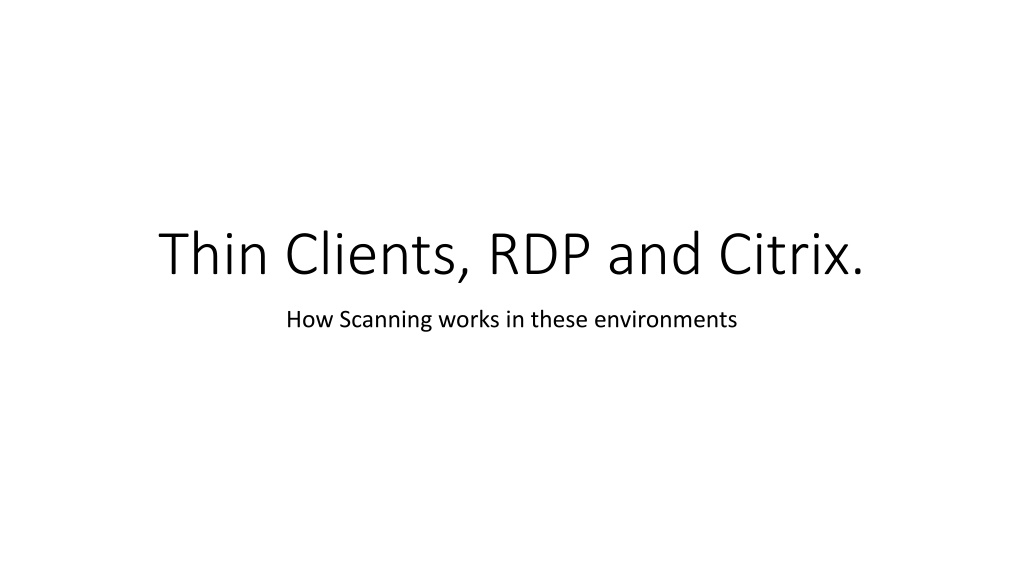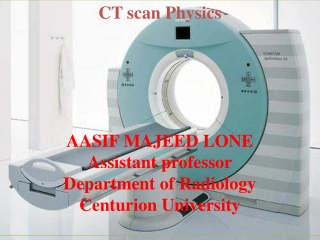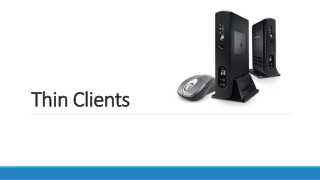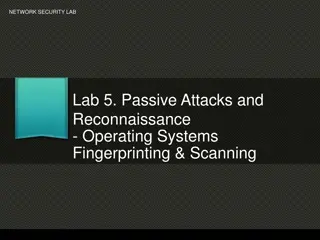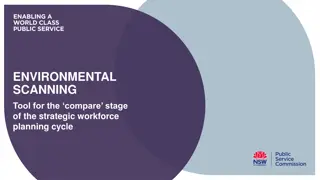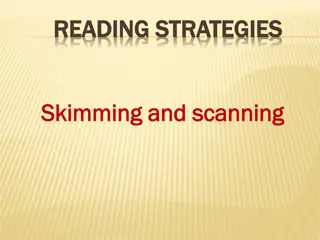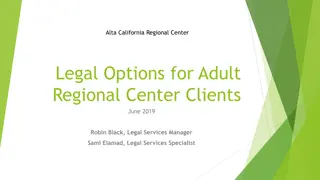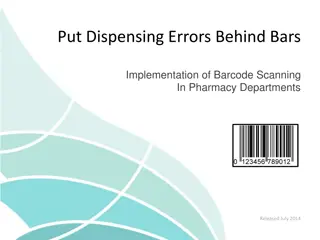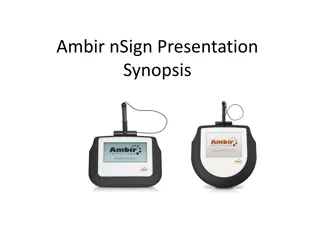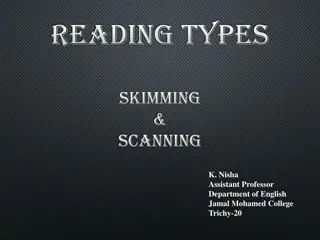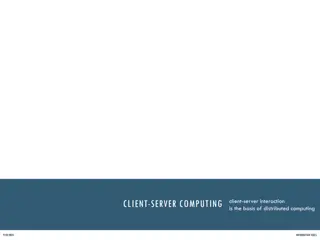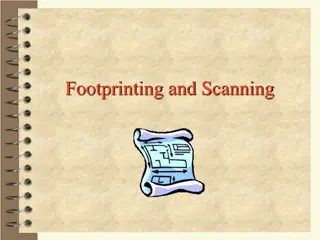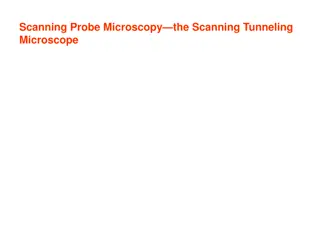Understanding Scanning in Thin Clients, RDP, and Citrix Environments
Learn about the difference between Fat Clients and Thin Clients, various types of Thin Clients, reasons for using Thin Clients, how programs are accessed on servers, and issues with scanning in RDP connections in this informative guide. Discover why Thin Clients are preferred for centralized software management and how RDP connections do not map scanners to servers, contrary to common assumptions.
Download Presentation

Please find below an Image/Link to download the presentation.
The content on the website is provided AS IS for your information and personal use only. It may not be sold, licensed, or shared on other websites without obtaining consent from the author. Download presentation by click this link. If you encounter any issues during the download, it is possible that the publisher has removed the file from their server.
E N D
Presentation Transcript
Thin Clients, RDP and Citrix. How Scanning works in these environments
The difference between Fat Clients and Thin Clients Fat Client: A fat Clients is full PC s running full versions of windows. They can be either a desktop or a laptop. Thin Clients: A thin client is a general term for a type of computer that is not running a full version of windows.
Different Types of Thin Clients Standard Thin Client: This is running a thin or stripped down version of windows. So the common OS s you will see on these are 7 windows embedded, windows embedded or XPE. Zero Clients: This is a type of thin client that is running a Propritary OS, often based on linux. Some examples of these OS s are dell s WYSE os or HP Smart Zero core OS.
Different Type of Clients and how I will refer to them. Fat Clients: Standard PC s Thin Clients: Running Thin Versions of windows Zero Clients: Running Proprietary OS s
Why do people use Thin clients? People typically run thin clients or zero clients when they are not planning on installing any software locally and will run most if not all of their software from the server. This allows the sys admins to manage all the software in a centralized location and not have to worry about specific PC s getting virus or losing data.
How Programs are accessed on the server Typically we see programs running on a server accessed in 3 ways. 1. Via an RDP connection. 2. Via Citrix 3. Via a proprietary zero client OS
RDP connection RDP is a standard function built into windows OS s that allows a user to access a different pc or log on to a server RDP is common to see connecting to a sever on both Fat and Thin clients. Often time our customers are running Compulink, GE centricty, Nextgen or EPIC on a server and accessing the EMR via a RDP connection.
The Problem with RDP and Scanners Often times customers make the assumption that RDP will map a scanner to the server or pc that is running the twain application they want to use the scanner with. This is not the case RDP Connections DO NOT map scanners over the RDP connection. Typically if a customer is connecting via RDP to an application they want to use a scanner within on a server they will need to purchase a 3rdparty software application that bridges the connection between the server and the local workstation.
Solutions for Scanning over a RDP connection Our customers use 2 main software solutions that allow you to scan over an RDP connection to a twain compliant software application. TS Scan and RemoteScan Both work by installing a piece of software on both the server side and the local side. The piece on the local side talk to the scanners twain driver. The piece on the server side talk to the Twain compliant application. Then the two pieces talk to each other over the RDP connection. This allows a scanner on the local side to talk with a piece of software on the server side.
Differences between RemoteScan and TS Scan With RemoteScan the twain compliant software on the server side sees a twain source of RemoteScan. Within that twain source you can set settings for the scan such as scan size, duplex/simplex, ect. You never actually see the twain driver with Remotescan only their interface. With TSScan you can select TS Scan as a source and it behaves very similar to remotescan where you see a TS Scan interface with scanner settings. However with TS Scan you also in the select source option see any twain compliant scanners installed on the local machine and if you select those scanners you get their standard twain UI.
Similarities between remotescan and TS Scan With Both of these application you will notice that neither of them have any need for the twain driver for the scanner to be installed on the server. Also with both of these the scanners will not be visible in device manager on the server or in devices and printers. Customers will often ask if a specific scanner will work with a Server operating system. If a customer is using RDP to connect to the server and is going to use Either TS Scan or RemoteScan to scan to that server they will never need to install a scanner on the server side.
Zero Clients Zero clients behave differently then fat or thin clients with a windows OS when using scanners. Zero Clients typically pass through the USB ports directly to the server. This means that the scanners will show up in device manager on the server. Because the USB ports are being passed through to the server the drivers will need to be installed on the server side. AmbirScanners are not officially supported on server OS s however this does not mean they wont work. Typically if you have the server role desktop experience installed scanner drivers install fine.
Citrix The main version of citrix we run into is Xenapp. Citrix Xenapp is a way for users to run programs that are based on a server on a local fat client or Thin client. There is a program that users install on the local side of the PC called citrix receiver. This allows them to go to a webpage login and then have access to apps that are running on a server or in The cloud . The cloud is just a term for someone else's server. Citrix receiver can be installed on many different types of OS s however for our purposes we will just assume its on a either a fat or a thin client with a windows OS.
How citrix xenapp works with Scanners Citrix xenapp unlike windows RDP has the ability to map twain devices over a connection. There is a feature on the back end of the Xenapp app settings in the user policies that is called Twain Redirection . Once turned on for a user twain Redirection redirects the twain driver of every scanner installed on the local system to any twain compliant applications published on the server the user has access to. No need to install any 3rdparty software locally like remotescan or tsscan. No need to install any drivers anywhere other than on the local side.
